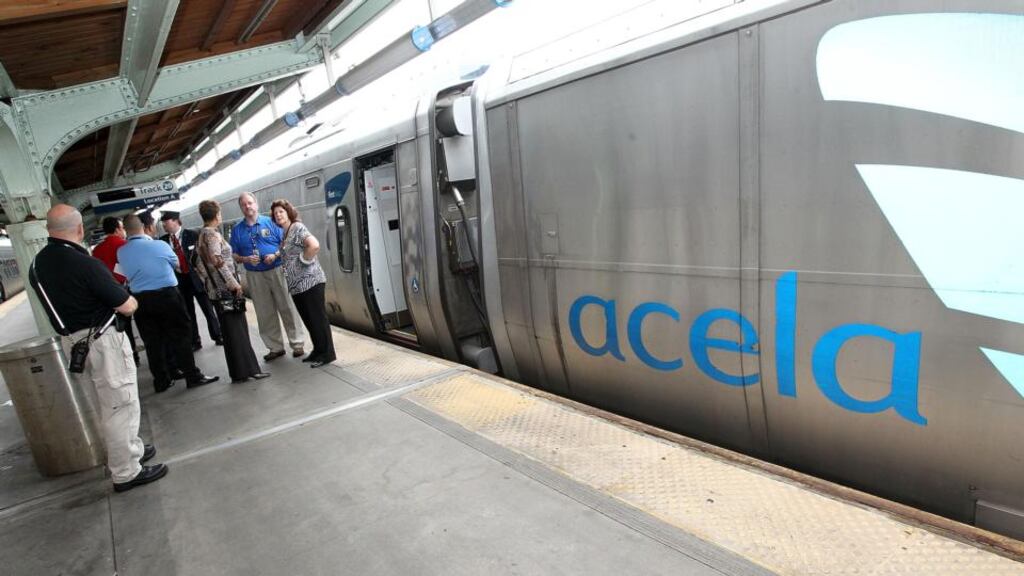Before the train pulls into Philadelphia's 30th Street train station en route from New York City to Washington DC, conductor Michael Sternfeld announces the stop to travellers over the train's PA system.
He urges alighting passengers if they have a moment to inspect the sculpture on the station's main course, Angel of the Resurrection, dedicated to the 1,307 Pennsylvania railroad employees who died in the second World War.
It was sculpted by Walker Hancock, one of the actual Monuments Men, he says. These were the men who recovered art pilfered by the Nazis. Their story was told in the recent George Clooney-directed movie of the same name.
It is one of many interesting historical morsels from Sternfeld as he announces station stop after station stop on the almost three-hour Acela Express train journey that connects America’s most populated city with the nation’s capital.
“It makes the trip more interesting,” he tells me a few days later. “I think a great many Americans are oblivious to the history that surrounds them.”
A familiar voice on the Acela, the high-speed train that connects Washington DC and Boston on a 456-mile route along the northeastern seaboard, the so-called "Acela Corridor," Sternfeld started dropping snippets of history into his announcements after passengers began asking about places they passed.
“About three years ago, people started asking me about the rivers,” he says.
Sternfeld plans to carry out further research on the Susquehanna River, which the train crosses in Pennsylvania, after a passenger queried his explanation that the name meant “great water”.
There are plenty of waterways to comment on along the route, from the Passaic river near Newark, New Jersey, to the Anacostia river, before the final stop at the majestic Union Station in Washington.
One of the most breathtaking sights is the river crossing at the wonderfully named Gunpowder Falls after the leaves have turned in autumn as the sun breaks to the east. It looks like Mother Nature has poured the contents of a trillion boxes of Quality Street chocolates along the shore.
At times, it can be hard to take in all the detail because the Acela travels so fast.
Sternfeld (67) says the fastest it will travel is 135 miles an hour near South Brunswick in New Jersey. On the New York to Boston leg, there is a 30-mile stretch between New London, Connecticut and Providence, Rhode Island where the Acela goes even faster, at up to 150mph.
The conductor’s mind seems to run as fast as the Acela’s engine, throwing out fact after fact as his train of thought goes off down different spurs. “I read a lot and I listen, and I put two and two together,” he said.
He started working for Amtrak at 10.30am on August 22nd, 1994, he says. Before that, he had worked for three federal law enforcement agencies. Asked which ones, he says: "I'll leave it at that."
He began riding Acela when Amtrak started the service in December 2000. The Acela carried 3.3 million passengers on 33 daily departures last year, according to Amtrak.
The route is the busiest railroad in North America with more than 2,200 trains using some part of this northeastern rail corridor every day.
Sternfeld works five "couplets" from Sunday to Thursday, travelling between New York and Washington 10 times a week. Famous regular passengers include US vice president Joe Biden who regularly travels from Wilmington, Delaware, near his home to Washington.
Biden often likes to engage in “retail politics” in the food car, buying coffee and pastries for commuters passing through.
He met Biden in the US embassy in Baghdad when he was in Iraq in 2005. Sternfeld was also a lieutenant colonel in the reserve army.
“I never thought I would get my ticket punched in Baghdad,” wrote Biden on the photograph of them that sits in Sternfeld’s living room.
Now retired from the army reserve, Sternfeld hopes to retire from Amtrak later this year to pursue a master’s in political management and work as a lobbyist or for politician.
He won’t miss the occasional unpleasant passenger who is “nasty to me about all the babbling, as they call it”, or the Quiet Car sound police who monitor the no-loud-talking-or-mobile-phone-use rule to an extreme, complaining about tapping on a laptop or music leaking from headphones.
“It puts me in the role of having to be an adult disciplinarian and I am a railroad conductor,” says Amtrak’s on-board historian.










